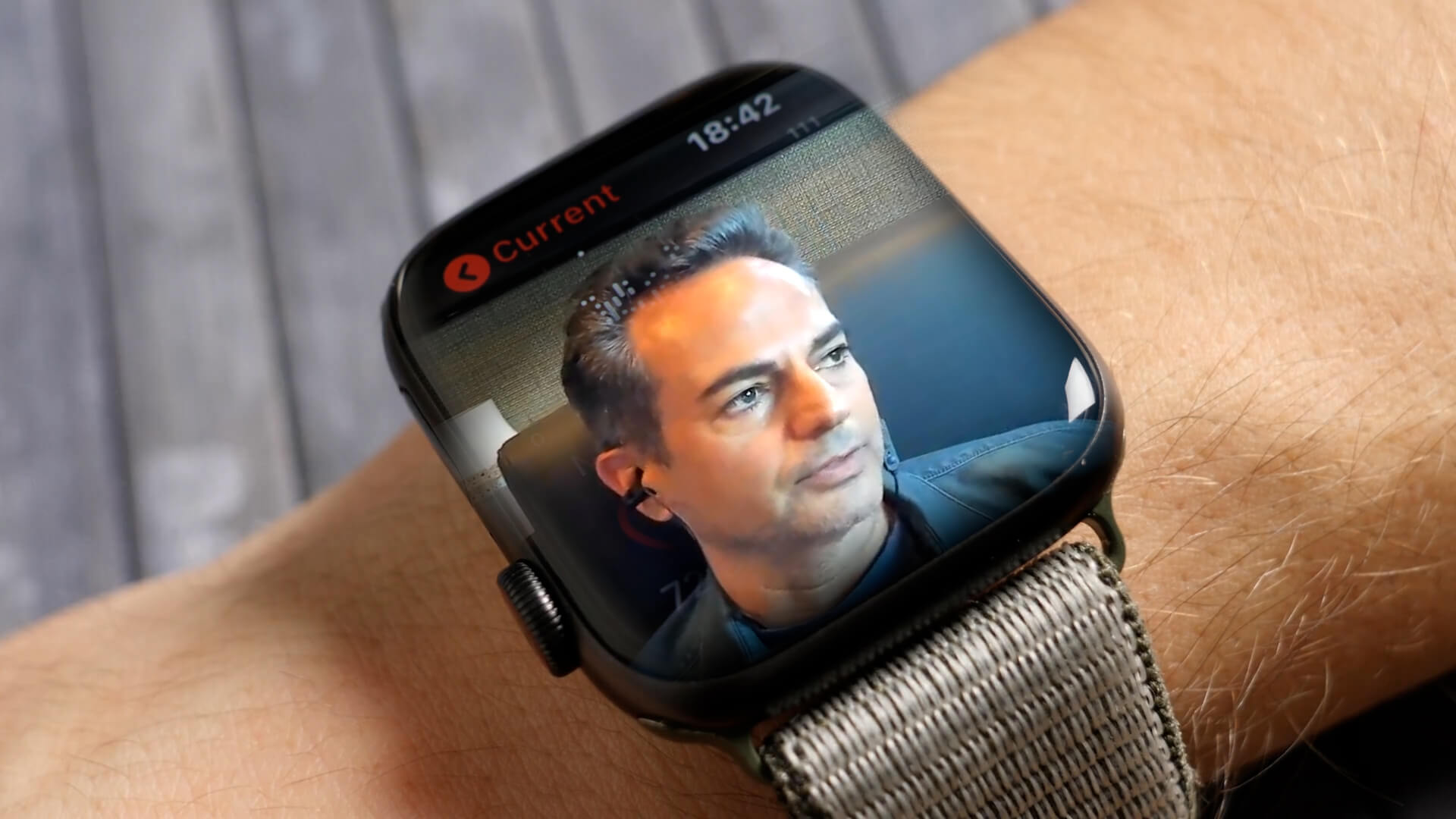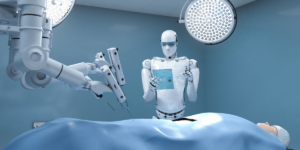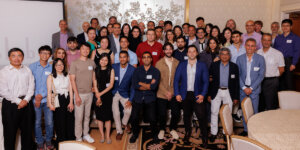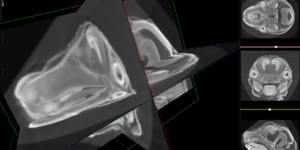
Cyrus Shahabi
The ongoing COVID-19 public health crisis has accelerated the use of wearable technology as an important source of disease and health data.
As healthcare providers work overtime to avoid dangerous overcrowding amid staffing shortages and surges brought on by new variants, they’ve quickly pivoted to wearable devices and remote technology as one way to help solve the problem.
For example, imagine a grandmother with cancer. Let’s say she’s one of about 30% of Americans who uses a wearable device like a FitBit or Apple Watch.
A symphony of data is streaming from her device: heart rate, sleep patterns, calories burned and number of steps.
That data is incredibly useful to physicians like Dr. Jorge Nieva, associate professor of clinical medicine at the Keck School of Medicine of USC. Rather than requiring the patient to visit a clinic in the midst of a pandemic, Nieva can quickly see how active or sedentary this grandmother is on a weekly basis. Armed with this knowledge, Nieva can better determine the right intensity and frequency of her chemotherapy.
But there’s a problem. No single oncologist can possibly manage the countless pages of streamable information from one patient — let alone hundreds — posing a challenge when it comes to analyzing, storing, and accessing this important data.
Now, a team from the USC Viterbi School of Engineering is working on a solution that would simplify the way medical professionals analyze wearable data to make a diagnosis without the patient having to step foot inside of a medical office.
“We’re going to have to have some way of bringing the physical exam across the computer screen, and that’s part of what these wearable technologies can do that for us,” said Nieva.
AI AND DATA SCIENCE
The USC project, Wearables for Health and Disease Knowledge, creates a software toolkit, titled W4H, that allows doctors to securely store, analyze, and visualize medical data collected from wearable devices.
“This is AI and data science used for precision medicine,” said Cyrus Shahabi, the project’s principal investigator and chair of USC Viterbi’s Department of Computer Science.
Wearables for Health and Disease Knowledge recently received a $1.2 million grant from the National Institutes of Health that will span four years.
Shahabi says the project first came to life through the USC Integrated Media Systems Center (IMSC) where he serves as the center’s director.
“The main challenge with wearable data is that it is live, and thus the data arrives as streams and grows continuously, rendering its management and analysis challenging,” said Shahabi, the Helen N. and Emmett H. Jones Professor in Engineering.
That’s where artificial intelligence and data science come into the picture: sorting the information gathered by wearable technology and turning it on-the-fly into analytics that doctors can easily read to make a diagnosis.
“The ability to analyze these large data sets to improve health and come up with new health care paradigms is really important,” said Dr. Leslie Saxon, the project’s lead cardiologist, executive director of the USC Center for Body Computing and professor of medicine at the Keck School of Medicine of USC.
“As a physician,” Saxon explained, “you want to make sure the data is accurate, and, second, you want to make sure the data is private. Then, you want to make sure that it is exception based, meaning I only pay attention to the data that’s of concern to me.”
At the heart of the research is collaboration. Doctors and engineers from three different USC schools — the USC Viterbi School of Engineering, Keck School of Medicine of USC and USC Dornsife College of Letters, Arts and Sciences — are working together to create the W4H toolkit.
The project is also working with medical professionals at USC Norris Comprehensive Cancer Center, Los Angeles County hospitals, Children’s Hospital Los Angeles, the Center for Body Computing at USC and the USC Michelson Center for Convergent Biosciences.
Researchers say the new technology would advance current wearable data systems available to doctors.
Clinical trials utilizing the W4H toolkit, currently underway at the Keck School of Medicine, are finding that the toolkit, used alongside the data collected by wearables, is helping doctors accurately assess the progress of their patients.
“With this model of care we are seeing data continuously,” said Saxon. “So we are able to act on signals early, and the most promising thing is we are able to discover.”
Before wearable technology came about, physicians say it was difficult to know what happened to their patients in between checkups. With the W4H toolkit, a doctor could pull up your chart and see exactly when and where abnormalities occurred in between visits.
“Many people have identified the potential of technology to improve assessment and intervention in health care, but to actually achieve that goal, the data has to be usable,” said Dr. Beth A. Smith, associate professor of pediatrics at the Keck School of Medicine of USC, and director of The Infant Neuromotor Control Laboratory at the Children’s Hospital Los Angeles.
TEAMWORK MAKES THE DREAM WORK
The case studies for the project cover three different disease areas that would help doctors make diagnoses related to cancer, cardiology and infant development using three types of wearable sensors.
Shahabi says the goal is to expand beyond those three areas through an open source system that would allow other medical professionals to use the W4H toolkit for their area of specialty.
With the W4H toolkit, wearable data like heart rate information used by cardiologists could also be easily accessible for an oncologist trying to monitor their patient’s activity levels and vice versa.
“This type of work really can’t happen effectively unless you have people from all disciplines involved.” said Nieva, the project’s lead oncologist. “The engineers need to be able to listen to what the clinical need is and be able to design tools that fit the clinical need. The clinicians need to listen to the engineers and understand what the limitations are and what the right analytical tools are.”
HEALTHCARE AT HOME
When it comes to patients, doctors say the W4H toolkit could improve the quality of care they receive while also reducing the costs.
“The great thing about it, because it’s enabled by software connection, is that it can provide health equity across the world,” said Saxon.
In the span of three years, wearable devices used around the world have more than doubled, increasing from 325 million users in 2016 to 722 million in 2019.
According to researchers, doctors using the W4H toolkit would be able to open a secure program that would then display a patient’s wearable data in charts and graphs that are easy to read and comprehend. It’s a solution doctors say would help them analyze a patient’s health problems quicker and more efficiently.
“Now the measurement is objective and what one physician thinks, another physician thinks, and a third physician thinks can all be the same,” said Nieva. “We can begin to reduce that variability in the assessment.”
When it comes to the expansion of wearable medical devices, the global market is expected to grow from $23 billion to $140 billion by the year 2027.
Researchers hope the W4H toolkit would facilitate in the expansion of wearables as they continue to impact the way healthcare is provided globally.
“I truly believe that this is the future of care. It’s a puzzle piece, a puzzle where different pieces are coming together,” said Peter Kuhn, a principal investigator for the project, and a founding member of the USC Michelson Center for Convergent Biosciences.
“While prior to the pandemic, that was all a vision, now it’s mission.”
Published on March 2nd, 2022
Last updated on March 5th, 2022













